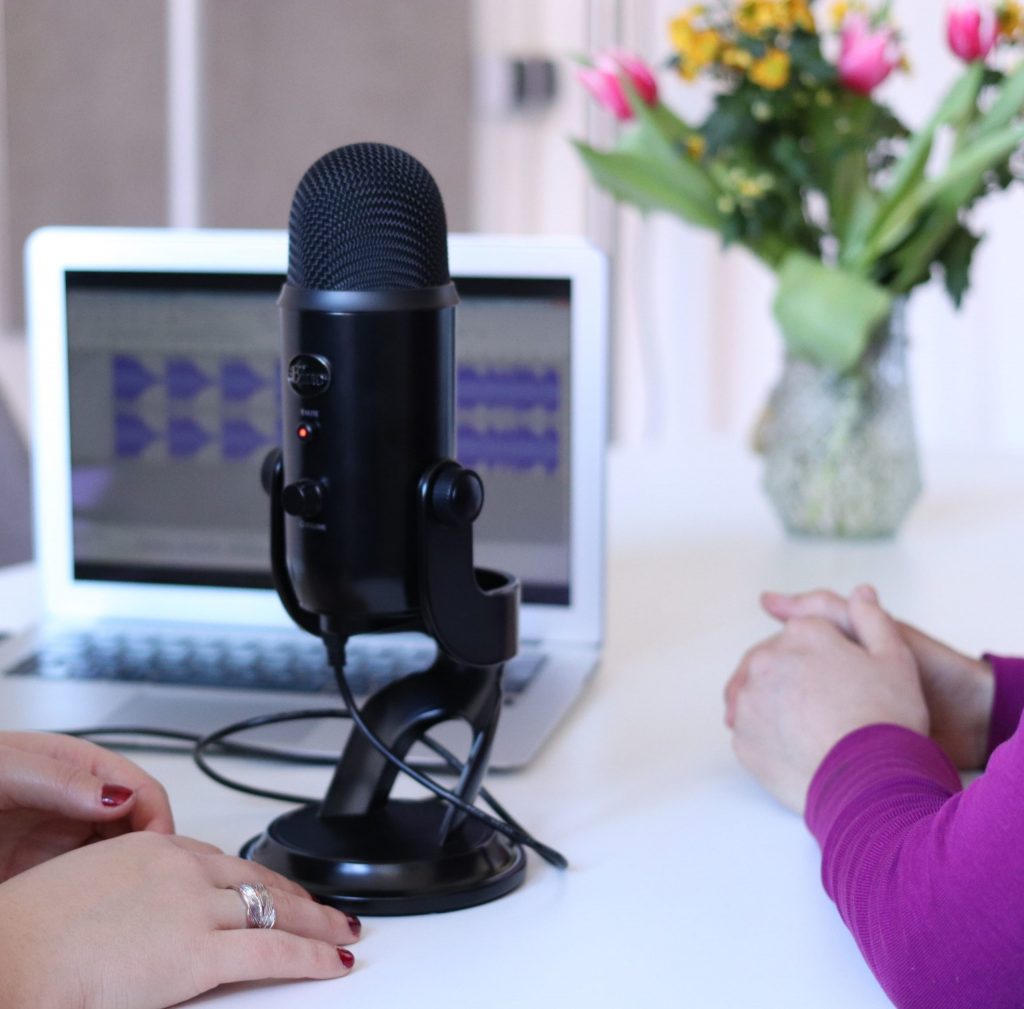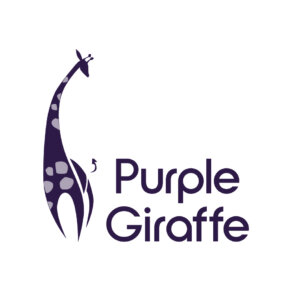Over the past few months we have shared in a series of blogs everything you need to know about Podcasting. If one of the blogs grabbed your attention but you missed some along the way we’ve brought them all together here in a mega blog! It’ll tell you almost everything you need to know to get started with podcasting. So, what are you waiting for?
The Basics – What Is Podcasting?
Have you ever been asked to create something which you’ve hardly heard of before? Or maybe you’ve experienced the pressure of having to keep up with today’s ever-changing technological world? I experienced this very thing when asked to create a podcast and had no idea where to start!
I know podcasts are rising in popularity as a marketing tool, and I listen to them myself, but the actual mechanics of writing and recording my own seemed entirely foreign to me. With one week to teach myself and no time to waste, I started with getting to know the basics.
Here’s what I found:
- Consumers want information in an abundance of ways and they want it when it suits them
- The easier the accessibility and consumption, the more likely consumers are to listen
With these points in mind, the fundamental idea behind podcasting seemed to make a lot more sense and I had some direction! However, if podcasting is a new concept to you, let me briefly help you get your head around it.
What is Podcasting?
A podcast is a portmanteau combining the words ‘broadcasting’ and ‘iPod.’ It is a form of audio broadcasting on the internet so it essentially works as internet-radio on demand. If that sounds a little complicated, you may find it helpful to think of it as audio blogging.
Podcast creators record episodes using a computer and relevant equipment such as a microphone and headphones. They then upload these files to a podcasting host and submit the episodes to directories so consumers can access them. You may have heard of iTunes, Google Play Music and Stitcher which are great examples of popular directories. On these, listeners can find a huge range of podcasts! Think of it like an on-line audio library full of audio books, interviews and documentaries.
How do you listen to Podcasts?
Most podcasts are free or can be purchased for a small price from these directories. Consumers can subscribe to podcasts the same way they subscribe to blogs. When new podcasts become available, subscribers will be notified and they can listen to these on their desktop computer or directly from their smartphone, tablet, iPod or any other portable device.
To listen to podcasts, listeners need internet access. As an alternative, you can download podcasts on to a computer and transfer these audio files to a good old trusty Mp3 player. Once downloaded, podcasts can be listened to internet-free and stored indefinitely.
What makes Podcasting different?
Podcasts enable listeners to indulge in audio content whenever and where ever it suits them. Due to our increasingly busy schedules, this is often on a work commute or while fitting in a quick walk around the block.
Listeners may listen to podcasts in a variety of ways such as through headphones, speakers, or even while driving provided their car has built-in Bluetooth or an ‘aux in’ port!
Why are Podcasts so popular?
Podcasts are rising in popularity among consumers and businesses and as a marketing platform for the following reasons:
For Consumers:
- One in four people aged 16-64 consume podcasts with 49% of consumers who listen to podcasts likely to influence those around them
- Gain simple access to information in their ‘own time’ which fits with both busy and non-busy schedules
- Can pause, skip and revisit podcast episodes with ease
- Can subscribe to podcasts which creates consistent, stress-free listening and the ability to follow podcast content
For Businesses:
- Podcasts are on the rise in the marketing world, so if you get in quick there is a chance you’re in front of your competition
- Won’t break your marketing budget as podcasts can be produced cost-effectively
- Podcasts provide the ability to place advertisements as breaks within the main content body
- Podcasts are unique and strengthen the two-way dialogue between a business and its customers
- Are able to help build strong, personal relationships with your audience in a way that is different to written content
- Regular podcasts help to build brand awareness
- Podcasting can help you drive traffic to your online store via backlinks in directories or through directing your listeners to your website either during or at the end of each episode
- Advertising delivered by the podcast host is great for capturing audience attention and driving brand recall
- Podcasts are fun and often include featured guests who can provide your audience with greater knowledge
The Ultimate Guide To Podcasting
Let me guess … you know what a podcast is and why you should start one, but now you’re asking yourself how and with what do I start one?
To help we’ve put together a step-by-step guide that will sharpen your thinking, provide you with the basic mechanics of how to get started, and have you on your way to perfecting the art of podcasting!
Step 1: Determine the why and who of your podcast
- Knowing why you’re starting a podcast is the key to staying motivated, interesting and relevant to your audience. Ask yourself – is your aim to build authority? To provide customers with informative content? Or to simply have a chat with them once a week and provide some great entertainment? The options are endless, but be sure to understand and stay true to ‘why’ you’re starting out in the first place.
- Who the podcast is for is also important. Coming from a business perspective, this will most likely be your consumers and their niche ‘persona.’ Once this is established, you can ask yourself whether this persona would find your scheduled content engaging and interesting. With this in mind it will become easier to plan your podcast schedule and content.
Step 2: Have a plan
- It sounds simple, but it’s risky to start with no plan in place. You need to give your audience a reason to listen to your podcast. This requires sitting down and understanding your relevant content, the sequence in which you will communicate this content, and the number of podcast episodes you may require to successfully achieve this.
- If your aim is 10 episodes, then you should have 10 potential topics that will appeal to your audience. It then becomes important to develop a schedule and give each episode a name that is descriptive so that listeners know what each episode is about. Releasing a podcast as frequently as possible is preferable, however you are only as good as your last podcast so make sure not to release content for the sake of it. If having one quality episode each month is what is achievable for you, then that’s how to start.
- Determine the average length of your podcast episodes. While it can vary, two areas to consider are your content and your target audience. For instance, if you have an hour worth of good content, don’t cut it down, either leave it or split it into two parts (episodes). Similarly, if you have 15 minutes of good content, don’t extend it with poor content. Also think of your target audience and how long their listening time-frame is likely to be and tailor your podcast length to this. Remember you can always survey listeners to get them to provide you with feedback in regards to desirable length.
Step 3: Choose a podcast name, description and design
- It goes without saying that the name is crucial when it comes to podcasting. You may wish to use your own name if this carries equity, or you could choose a descriptive name that your audience will find appealing. Remember that there are hundreds of podcasts out there, so choose a name that listeners will be able to find and that sparks their interest.
- A description is a brief paragraph about your podcast that the audience sees before choosing to listen. Make sure this description is relevant and will motivate them to press play.
- Your cover art is one of the most important aspects of the design. Ensure it’s easy to read, features the podcasts name, has one focal image related to your podcast topic and is colourful and appealing to browsers. If possible, and you have the budget, use a graphic designer to really perfect this step. Directories will often have guidelines as to the sizing and file type for this artwork so be sure to check these out before beginning the design process. For instance, iTunes requires the image be in JPEG or PNG format and 72dpi.
Step 4: Prepare your equipment
- Prior to recording your podcast, you need a computer and access to the internet. You may also wish to get your hands on a microphone, headphones and software for editing and recording. This step will depend on your budget, desired audio quality and your reason for starting the podcast in the first place.
Step 5: Record your podcast
- Now for the fun part – recording your podcast! Start by setting up your microphone and testing all of the equipment that you prepared in Step 4.
- There are many different variants of podcasts including solo podcasting which is a monologue, the co-hosted show in which one person presents alongside a friend or colleague, the interview show in which one person interviews an expert, the roundtable in which one host and a number of guests talk around a table, and so on! Choose the one which works best for you and your audience
- A good podcast will be authentic, engaging, informative and make use of high-quality guests and respectful discussions. It’s also important to ensure the content aligns with the audience that was defined in Step 1.
Step 6: Edit your podcast
- It takes a bit of time to perfect the art of editing your audio. A good start is by importing your clips into the audio software of your choice and working your way from there. Once you’ve finished, export your audio as an Mp3 file and be sure you save it as per the guidelines required by your directory which we’ll explore more in Step 7.
- Another good tip is to make sure you’re abiding copyright laws when it comes to using music in your podcast. There are a number of websites which offer music to be used legally online.
- Remember that outsourcing this step is also an option if you don’t mind spending that extra bit of money.
Step 7: Publish your podcast
- There are two main elements when it comes to publishing your podcast – choosing your podcast host and submitting your podcast to directories.
- A podcast hosting account stores your audio and enables your listeners to listen, download and subscribe to your podcast. To publish your episode, it must be uploaded to your host provider and they will give you instructions regarding the next steps.
- Once you’ve uploaded your audio file to your host provider, you can submit it to directories via which listeners can discover, subscribe-to and download your episodes. The most common are iTunes and Google Play Music, as well as Stitcher, Pocketcasts and Spotify. Most are free, but every now and then listeners will have to pay for content.
Step 8: Promote your podcast
- Now that your podcast is good to go, it’s time to promote it! This step can be achieved through advertising on your own website or via your social media platforms but is open to creativity, so the sky is the limit and it’s up to you to get it into your listeners’ ears.
Podcasts are designed to be a fun way in which to engage with your audience, so think of it as a casual chat and try not to feel overwhelmed when beginning your journey into this new marketing and communications space. If in doubt, do your research as there are many resources available to help you along the way.
Why Podcasting Is An Important Marketing Tool
Podcasting is a unique marketing tool because it gives your business a competitive edge in today’s growing technological world.
Podcasts last a lifetime:
If full of entertaining and relevant content podcasts do not expire, EVER! This is important for marketers and content creators because it means a well-optimised podcast embedded into your website will last a lifetime. The same content can be downloaded and listened to again and again which organically boosts consumer engagement. Even when you discontinue releasing podcast episodes, you’ve still got high-quality content to which you can refer back in the future. This extends to podcasts which are transcribed and released online. These written documents often contain links that direct customers and visitors to online platforms such as social media or web pages. It’s important to note that these are organic links, and often play a huge role in search engine optimisation, provided the headings and titles relate to a consumer’s online search. This is a great way to increase reach and engagement which are beneficial to your business.
Podcasts are engaging:
Podcasts are a great way to create a two-way dialogue between a business and its customers. They’re different from written content because they enable an interactive message to be conveyed, therefore having a more sound (pun intended) impact upon consumers than written content is able to achieve. Episodes are engaging and arguably more convincing when it comes to promotion because there’s the opportunity for more calls to action. Credibility can also be added by featuring guests who have an influence on listeners’ buying decisions.
Podcasts are focused:
Podcast content can be extremely focused because only listeners interested in the topic will play your podcast or subscribe to it. Therefore, you can tailor the needs of your target group and avoid wasting resources trying to attract individuals who are not prospects.
Podcasts build relationships with the audience:
If someone listens to your podcast, it’s because they WANT to. As a marketing tool, podcasts help build relationships between the creator and the listener. Podcasts are intimate and give listeners the feeling they’re talking, or listening, to a friend. A listener will subscribe to your podcast if they have something in common with either you or the brand you’re representing. Over time, listeners develop a strong connection with the brand and begin to build trust it. A podcast builds authenticity and transparency for a brand and gives listeners a preview of the behind the scenes – again building the two-way dialogue and relationship. Ultimately, people are more willing to buy from a brand they’re familiar with.
Podcasts are unique:
It goes without saying: podcasts are DIFFERENT to other marketing tools. They have only recently sparked popularity and there’s no denying that they’re on the rise. Implementing the tool quickly means you’ll likely beat competitors to it which gives you an advantage and an increase in attention. Podcasts give you a chance to showcase your company’s authentic-self and gain only the customers who fit perfectly with your business. It’s a win-win for both the business and the consumer.
Appealing to listeners:
Nowadays consumers love information on-the-go, so why not take advantage of this by bringing out a podcast. Whether your listeners are driving, exercising or busy at work, they can plug in headphones and be captivated by their favourite topic within seconds of pressing play. Podcasting enables brands to tell their story when and where best-suits the listener, so it makes sense why they’re so appealing!
Podcasts are easy to make:
In comparison to other marketing tools, podcasts aren’t overly complicated. And, better yet, podcasts don’t have to break the bank. As long as you’ve got the basic equipment and access to the (mostly free nowadays) editing software, you should be good to go. From there, a good Wi-Fi connection becomes your best friend when it comes to uploading your masterpiece. Remember that if your budget is still super tight, you can always ask to feature on an existing podcast instead!
Podcasts build brand value and brand awareness:
Podcasts help businesses build brand value and drive brand awareness. They’re designed with a specific target audience in mind so content and featured guests are tailored around this very ‘persona.’ You have freedom to match your topics with listeners who you KNOW value your brand. Over time, they trust you, become familiar with your offering and spread this good will and word to their friends, families and acquaintances. You can also feature influencers on your episodes who not only promote your podcast, but also drive traffic to your brand itself. Freedom is key!
Bottom line: podcasting brings uniqueness to your marketing strategy. It’s different, authentic and opens doors to some really cool opportunities.
Eight Tips For Creating A Successful Podcast
In this blog, we guide you through our top eight success factors when it comes to creating a podcast.
- Having a focused topic
It’s easy to get carried away when it comes to podcasting so your best bet is to keep the focus on a single, narrow area. This will simplify your planning, particularly when it comes to creating the ‘persona’ of your listeners which is referred to throughout every step of the podcasting process.
- Finding a niche market
Rather than creating content for a broad audience, it’s effective to cater to one particular niche whose interest lays in the focused topic. Not only does this help you craft your content to a specific audience, but it also helps you refine and target the way you promote your content to best reach the listeners you’re trying to attract. You can create criteria of your ideal listener and check each decision (promotion, episode content etc.) against these.
- Using suitable equipment
A good podcast cannot be made without good equipment and sound quality and clever editing is important. Headphones, a microphone and software are great tools for recording and editing your podcast. Sufficient sound quality requires extensive testing prior to hitting record, and the editing requires lots of practice and an understanding of how the content should flow. If you struggle with editing, outsourcing this step is very worthwhile!
- Sticking to a plan
Plan, plan and plan! Make sure you begin your podcast journey with a strategy in mind. Who is the podcast for? How often will you release an episode? How many topics will you cover? What’s your budget? Will release dates be sporadic or consistent? Will you submit to one directory or five? Most importantly, be realistic when planning your podcast. Don’t aim for an episode every week if your schedule does not permit enough time to record, edit and upload this frequently.
- Setting episodes to an appropriate length
As a general rule of thumb, podcasts should be between fifteen to thirty minutes in length. Often the longer the podcast, the less likely listeners are to listen to the entire audio. At the same time, it’s difficult to provide a good quality episode to listeners in less than five minutes, so try and keep the fifteen to thirty-minute guide in mind!
- Engaging with listeners
Most listeners love it when you engage with them. It’s always good to be active, spontaneous and ask lots of questions. This tip extends to bringing in feature guests who will add to the dialogue. Make sure you listen to them carefully and be open to where the conversation may go. This will create a fun discussion and let you ask listeners what they want to hear, what they do and don’t enjoy about your podcast. Remember that not all listeners will want to engage so it’s important to get a feel for the audience and not be too hard on yourself if they’d rather not get involved. Finally, to increase your chances of success, be sure to add in a ‘call to action’ through which you can direct listeners to subscribe, like your page on Facebook or visit your website for more information.
- Promoting the podcast
There’s no point recording, editing and uploading a podcast if you’re only going to dismiss external promotion. Adapting your podcast is highly important as it opens the door for promotion on other platforms. For instance, you may choose to transcribe your episodes so that they can be turned into blog posts or social media posts to be liked or shared by listeners and potential listeners. You may also wish to advertise through guest speakers, partnerships, sponsorships or giveaways. With so many podcasts out there, it’s important to be proactive in your own marketing.
- Having fun
By having fun when creating your podcast, listeners get a feel for your personality and it makes them want to keep listening. Showing you’re having a good time creates authenticity and will help generate an organic following.
Our top tip: don’t give up! Successful podcasting requires practice. Familiarising yourself with the above eight tips is a great start. Good luck!
Seven Mistakes To Avoid In Podcasting
Every podcaster makes a mistake at some point in their podcasting journey. Whether it’s an editing mishap or forgetting to give listeners a call to action, remember it’s not the end of the world. To help you get it right, here we outline seven common mistakes to avoid in podcasting and how you can overcome them with ease!
- Not knowing your audience
Not knowing your audience is a major mistake for any podcast creator. Listeners need to be segmented into a niche so that content, guest features and upload frequency can all be tailored accordingly. When the audience is known, creators can focus on niche topics which they know will fit the audience’s needs, as opposed to covering a broad range of topics that only some listeners will enjoy.
- Not following a plan
Being inconsistent with your podcast is a huge mistake and an important one to avoid. Establishing a detailed plan at the start of your podcast journey will ensure there’s always enough content, consistent uploads and a targeted niche around which topics can be tailored.
- Having poor sound quality
Most of us will stop listening to an audio if there’s something not quite right about the sound. Maybe it’s too loud, slightly unclear, or overpowered by background noise. Investing in a good quality microphone is essential and doesn’t have to break your budget. You won’t need a top-of-the-range microphone, but you’ll need one that works well enough to keep listeners from switching your podcast off before 5 minutes is up.
- Not including a call to action
A call to action should be included in all podcast episodes. Whether it’s directing listeners to your website, social media platforms, encouraging them to subscribe or to check out past episodes, it helps! Listeners sometimes need that extra push and it takes less than 30 seconds to provide them with just that, such as by directing them to subscribe to your show at the end of each episode.
- Not collaborating with guests
While your audience clearly likes listening to you, it gets repetitive if you don’t switch things up every so often. You can keep engagement levels high by collaborating with other podcast hosts or by bringing in featured guests. For instance, you may bring in a finance expert during the week you’re recording an episode about money saving. Or, you may record a joint episode with another podcast host who shares similar interests to you. This allows your podcast name to be shared on another creator’s social platforms, and commonly leads to an increase in downloads.
- Not letting listeners find you
Sometimes, the issue is not that your podcast isn’t good, but it’s that no one can find it! Ensure your podcast can be found on the main directories such as iTunes, Google Play Music and Stitcher. Your podcast also needs a catchy design, description and if possible, reviews! Encourage listeners to leave reviews about how much they loved your episode which are often used by listeners browsing for something new. This leads us to the next mistake to avoid…
- Dismissing promotion
Promoting your podcast is essential and should never be dismissed. Advertising on platforms which best align with your target listeners is a great step to take, as well as consistent advertising which increases around the time of an episode release. Reviews are also important, both on the directories as well as your relevant social media platforms.
Don’t fret! There are many resources available to help you overcome any initial teething issues. Remember that almost every mistake can be turned into a valuable learning lesson and your first podcasts are not going to be perfect, and nor are they expected to be!
How To Successfully Promote Your Podcast
Once your podcast is finalised, it’s time to promote it! With over 30 million podcast episodes out there, it’s important to do anything and everything you can to appeal to the right listeners. We’ve got some top-tips that you can use to stand out.
- Leverage your design
First things first – a catchy name, appealing cover art and good description are simple yet effective ways to attract listeners. Break through the many podcasts out there by leveraging colour, an image that demonstrates your podcast and a name that catches the attention of your audience. Think of the description as your time to shine, and aim to encourage podcast browsers to choose you.
- Know the ‘persona’ of your listeners
It’s important to promote using channels that best align with your target audience. A clever option is to construct a ‘persona’ of your listeners as you start learning more about them. This could be a written document which summarises their lifestyle, social media habits, preferred podcast listening time and other areas of interest. Knowing the persona of your ‘best listeners’ inside and out will come in handy when you start promoting your episodes.
- Leverage feature guests and their audiences
Influencers, influencers, influencers! Whether they’re a body who’s bound to draw attention to your brand, or an expert in the field of one of your topics, don’t forget to leverage their audience! Get feature guests on board with a topic they’re passionate about, film an awesome episode, and promote it on both of your social media accounts. Not only does your audience get excited to listen to a new guest, but their followers are made aware of your podcast which in turn may increase your following, also!
- Adapt your podcast for other platforms
It’s always a good idea to adapt your podcast so that it can be used on other online and traditional platforms. Make sure every episode is transcribed and edited so that it can be turned into social media content or a blog post. You could transfer this content to a flyer or brochure to be handed out at events and meetups. Another idea is an email newsletter which is a simple and direct way to connect with listeners. It also enables you to measure the ‘clicks’ and ‘drop-out rates’ when it comes to subscriptions.
- Giveaways, events and meetups
Going to events and meetups is a great way to spread the word about your podcast. If your content is about fashion, you may find it beneficial to attend a fashion event or forum with flyers and business cards to promote your show. In one of your episodes, you may also wish to provide a ‘giveaway’ to listeners in which you team up with a brand you know your listeners will like. This leads us to our next tip…
- Seek sponsorships and partners
If in doubt, contact brands to partner up with. There’s no harm in sending an email asking a company if they’d be happy to send you some of their products to promote in one of your episodes (assuming that episode’s topic is relevant to what their brand stands for). It’s a great way to build professional relationships with brands who may even decide to sponsor you later on down the track.
- Create value
A simple yet effective tip is to provide genuine value to listeners. Spend time creating high-quality content and igniting real discussion so that a connection can be built between you and your listeners. This two-way bond will benefit you, as well as your listeners who will feel highly valued and remember to stay connected and reference you in the future.
- Promote your podcasts within podcasts
A quick way to promote your podcast is by referring back to old episodes. For instance, you may direct listeners ‘to learn more about money saving, check out episode eight from last month in which we shed light on five awesome tips.’ Not only does this encourage listeners to check out your old episodes, it generates another opportunity for a great review.
- Submit your podcast to multiple directories
Submitting to directories is important, but submitting to the right directories is more important. Around 70% of podcast downloads and listens are made through iTunes, much higher than other directories such as Google Play Music and Stitcher. By submitting your podcast to iTunes, it’s more likely to get spotted by browsers looking for something to download.
- Encourage subscription
Having a ‘call to action’ in each episode is a very easy yet effective way of promoting your podcast. Examples include reminding your listeners to ‘subscribe so you don’t miss an episode,’ ‘like our page on Facebook’ and ‘check out a behind the scenes preview by adding us on Snapchat.’ Once subscribed, it’s more likely that listeners will engage with your podcast regularly and spread their love for it via word of mouth!
- Collect as many reviews as possible
Many listeners rely on reviews to determine whether or not they’ll give your podcast a listen. If you have multiple positive reviews, it promotes listeners to download your show. Reviews also provide organic feedback which you can use to improve your podcast. The way to obtain many reviews is by promoting listeners to leave reviews in the first place. At the end of each episode, encourage listeners to share the podcast or leave a review. Alternatively, you could provide incentives to those listeners that leave reviews such as their automatic entry into a giveaway competition.
- Strive to be on the ‘New and Noteworthy’ iTunes list
The ‘New and Noteworthy’ list on iTunes is the most visible part of iTunes’ podcasts for potential listeners to see. This is seemingly dependent on the number of downloads, reviews and subscriptions within an eight-week period. Your podcast has this eight-week period (notably unconfirmed by iTunes) to make its way on the list before it goes back onto the standard listings.
Listeners will come to you if they want to, if they know you exist and if they can find you. However, going overboard with these tips is annoying and will result in the complete opposite of gaining a following! We want to drive and interest listeners, not overload them with promotion. Take your best shot at generating organic promotion and monitor it as you go. Good luck!
Podcasting: A Final Word
If you haven’t yet had a chance to check out our Purple Giraffe Podcasting Series, don’t fret! Here’s a final run-down which provides the absolute essentials, or give you a chance to review everything important if you’ve been keeping up to date!
What is podcasting?
Podcasting is audio broadcasting on the internet which works as internet-radio on demand! Essentially, it’s audio blogging that’s increasing in popularity as a marketing tool.
How do you make a podcast?
In short, you need an awesome plan, basic equipment such as a microphone, headphones and computer, and an editing software program. Once your audio file is good to go, choose a podcasting host and submit it to popular directories such as iTunes and Google Play Music.
Why does your business need podcasting as a marketing tool?
Nowadays, consumers want information in an abundance of ways and they want it now and at their own convenience. Podcasting is a unique marketing tool through which businesses can generate an edge over competitors by leveraging an emotional, two-way dialogue with their target audience. Podcasting is different, authentic and opens doors to some powerful opportunities in the future.
What makes a successful podcast?
Know your audience, be authentic, promote your episodes and make the most of featured guests and sponsorships are all great tips! Most importantly, have fun and be authentic, as podcasts are a fantastic way to showcase your personality and generate an organic following of listeners who genuinely value your work.
What mistakes should you avoid in podcasting?
A poorly planned strategy and low-quality equipment should be avoided when it comes to podcasting. It’s also important to keep adapting your content, leveraging influencers and including ‘calls to action’ in each episode so that listeners are motivated to subscribe and follow you on your social media platforms.
Bottom line on podcasting:
A final word: once you’ve mastered all of the above, you need to promote your podcast! There’s no point perfecting the art of podcasting if no one is listening. Congratulate yourself first, then tell everyone about it!
Thanks for coming on this learning journey with Purple Giraffe. We wish you the best of luck in your own podcasting endeavours!
Blogs, articles, website and journals that have been referenced when researching and writing this blog series:
https://yaro.blog/230/what-is-a-podcast/
New study reveals 3.5 million people listen to podcasts in Australia
https://blogging.com/podcasting/
https://blog.mindvalley.com/podcasts-beginners-guide/
https://blog.mindvalley.com/podcasts-beginners-guide/
https://blogging.com/podcasting/
https://www.thepodcasthost.com/planning/how-to-start-a-podcast/
https://blog.markgrowth.com/7-reasons-to-use-a-podcast-as-a-marketing-tool-115ca4f880d6
https://www.forbes.com/sites/forbescontentmarketing/2019/02/14/12-tips-for-building-a-successfulpodcast/#49f786d7306d
https://www.forbes.com/sites/quora/2017/05/23/seven-elements-you-need-to-create-a-successful-podcast/#f7969a290a15
https://au.pcmag.com/how-to/57854/how-to-create-your-own-successful-podcast
https://www.podcast.co/inspire/podcasting-mistakes
https://www.inc.com/melanie-curtin/starting-a-podcast-avoid-these-7-common-mistakes.html
https://www.bam.com.au/blog/podcast/4-podcasting-mistakes-to-avoid/
https://buffer.com/library/promote-a-podcast
https://www.podcast.co/reach/promote-your-podcast
https://castos.com/how-to-promote-a-podcast-2019-guide/
https://www.thebalancesmb.com/search-engine-optimization-2948419







